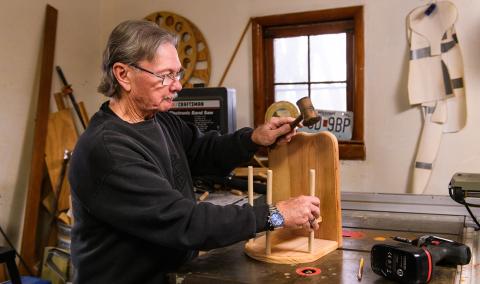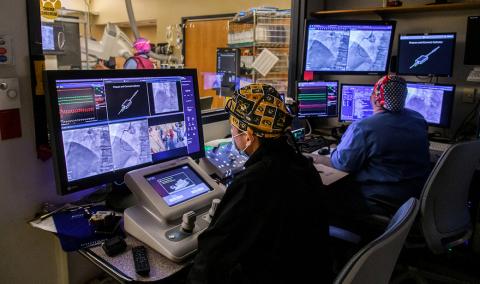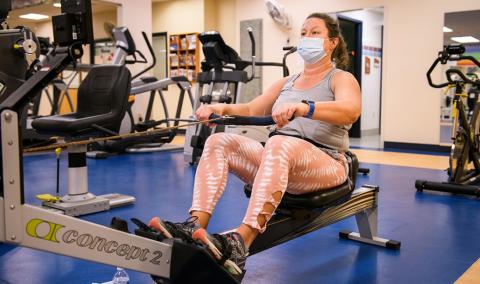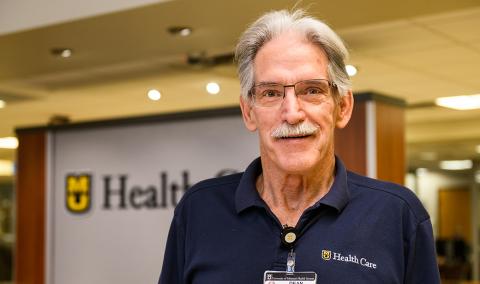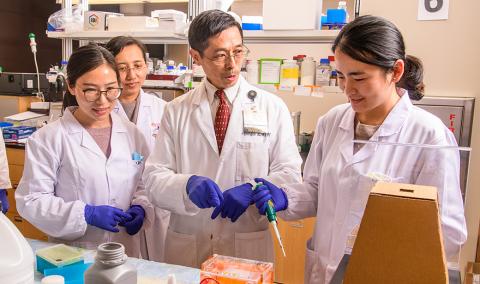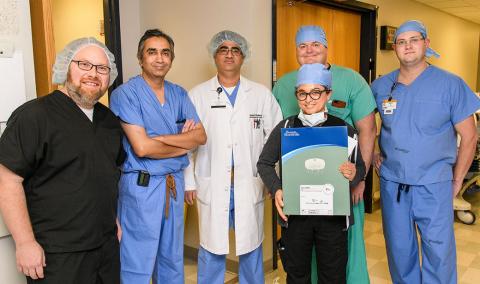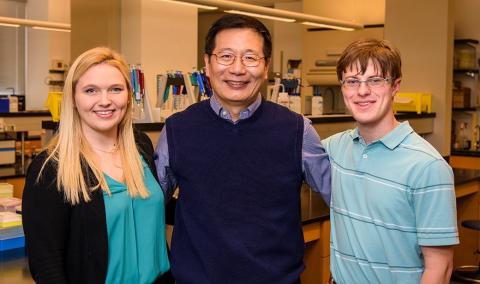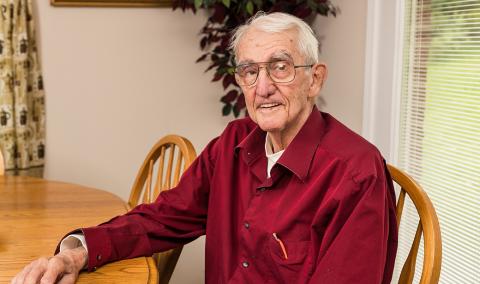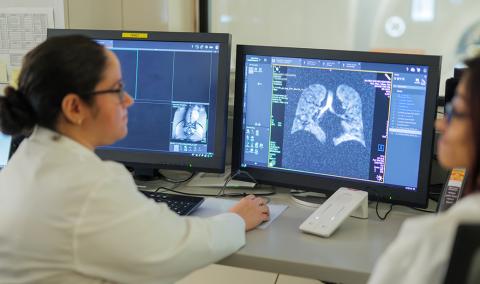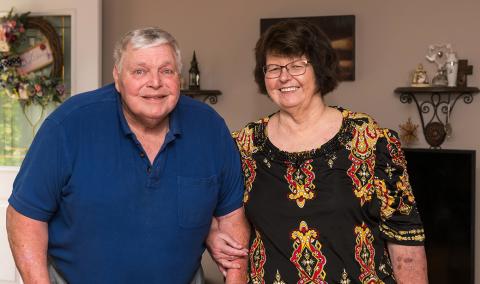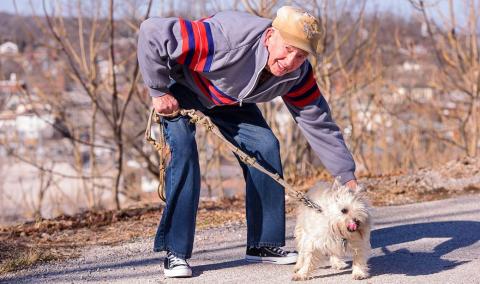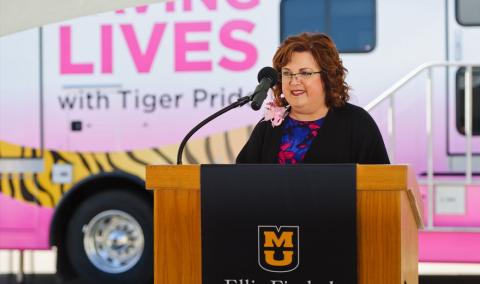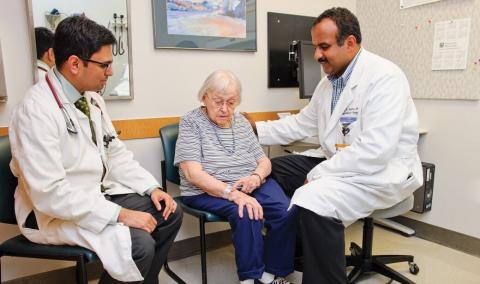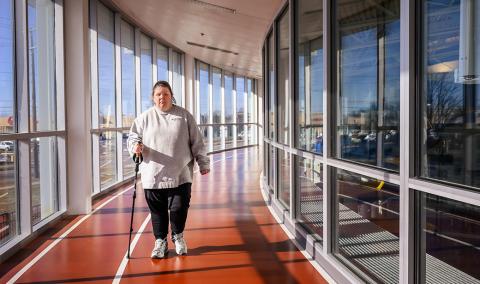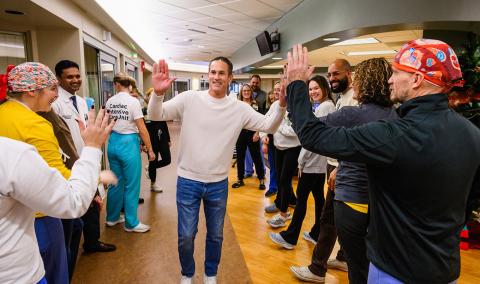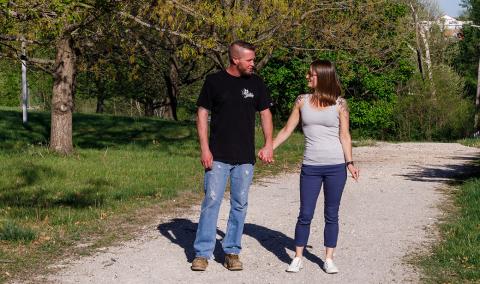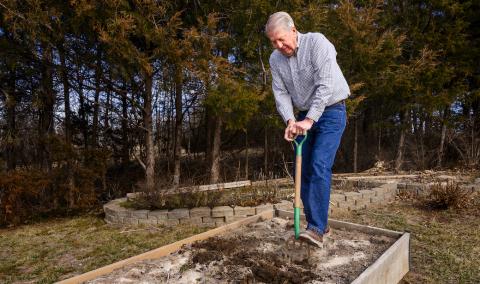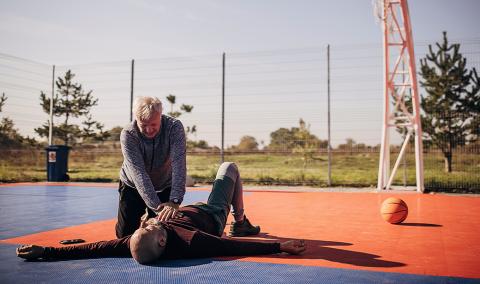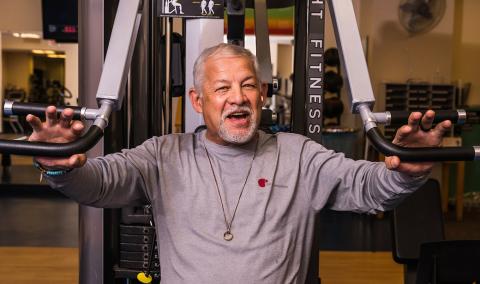Veins are part of the vascular system along with the heart and arteries. The primary function of veins is to circulate blood back to the heart after arteries carry blood to organs.
Veins that become stretched can lead to blood pooling in the legs, and that can increase pressure and create enlarged veins. This common condition can cause pain and discomfort and lead to both health and cosmetic issues, such as varicose veins or spider veins. At MU Health Care, we have the largest team of vein specialists in mid-Missouri.
Risk factors of vein disease
Some people might be at higher risk of vein disease than others. If you fall into any of the categories below, you have a heightened risk.
- Older adults. Vein disease becomes more common as we age.
- Female. Women are more likely to be diagnosed with vein disease.
- A family history of vein disease, as it is hereditary.
- Obesity. Overweight individuals have more pressure on their veins, leading to vein disease.
- Pregnancy. The amount of blood in your body increases during pregnancy, increasing the pressure on your veins.
- Sitting or standing for prolonged periods of time. Staying in one position makes it more difficult for your veins to function properly.
Symptoms of vein disease
Patients with vein disease might notice more pain or discomfort as they sit or stand for long periods of time. Many times, people describe their pain as burning, stinging, achy or heavy areas within their legs. Some people also notice itching or cramping near a damaged vein. Resting your legs in an elevated position might help relieve your discomfort.
Skin changes can also occur with vein disease. A rash, skin discoloration, swelling or scarring around the ankles or lower legs can indicate vein disease.
Treatment options
MU Health Care offers a variety of non-surgical and surgical options for treating health-related illness and cosmetic appearance of veins. This includes treatment for common cosmetic diagnoses like varicose veins and spider veins. Our doctors and staff work with patients so they can experience a variety of benefits including better sleep, improved circulation, higher energy levels and relief from chronic pain and inflammation.
- EndovenousLaser Ablation Therapy (EVLT) – Diseased veins, some that might lead to varicose veins, are closed off using a laser through quick, high-intensity bursts. Laser therapy is done as an outpatient procedure.
- Phlebectomy – Varicose veins are removed through a series of small skin incisions. Local anesthesia is used for this outpatient procedure.
- Venous Ligation – A portion of the vein is tied off and cut in half through a small incision in upper leg or groin. This is performed under sedation or local anesthesia.
- Sclerotherapy – This procedure treats spider veins by injecting a solution into small and medium-sized veins. While a vein might need to be injected more than once, in a few weeks, the veins should return to normal. Sclerotherapy is considered an outpatient procedure and anesthesia isn’t needed.
- VenaSeal – An adhesive solution is used to close the varicose vein through a small incision in the affected leg.
- Radiofrequency Ablation – The affected vein is closed by using high heat to form scar tissue. This is considered an outpatient procedure.
- Iliofemoral Stenting – A metal mesh tube is placed inside the vein to help keep its structure and reinforce the vein walls.
- Deep Vein Thrombolysis – Medication is administered inside the vein to dissolve the clot through a small incision in the leg to treat deep vein thrombosis. Sometimes a stent may be placed to keep the vein open after the clot is removed.
- Superior Vena Cava Stenting – A stent is placed inside the superior vena cava (vein that brings block back to the heart’s right atrium) to maintain blood flow.


